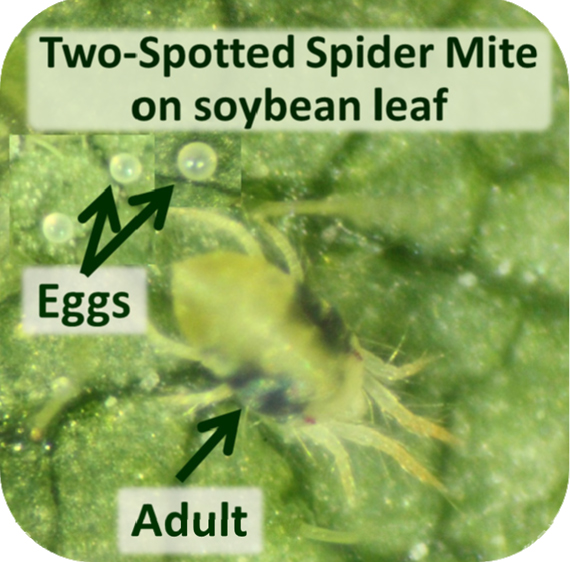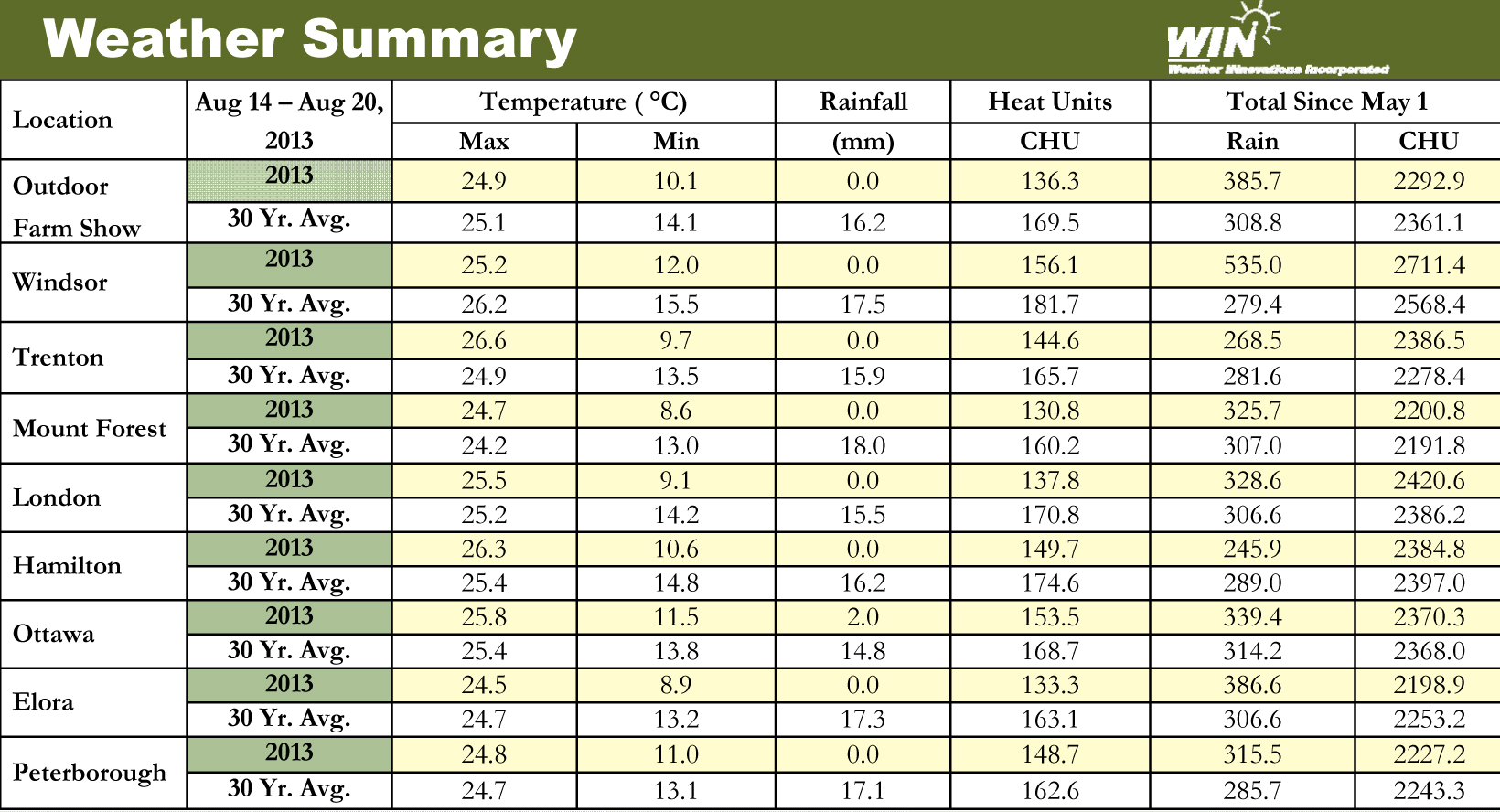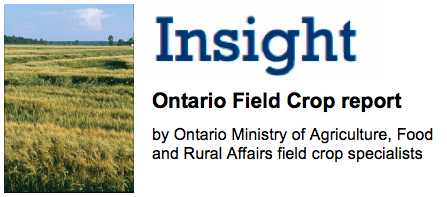Soybeans: Gilles Quesnel
Most soybean fields are at the R5 stage (seeds are 3 mm long in the pod at one of the four upper nodes on the main stem). Soil moisture is generally adequate for seed fill and across the province pod set ranges from average to excellent.

Two-spotted spider mites are starting to show-up in drier areas. Mites feed on individual plant cells on the underside of leaves where each feeding site causes a stipple/dot. Severe stippling causes yellowing, curling and bronzing of the leaves and the damage is more severe in hot, dry weather. Spider mite infestations usually start at the edges of fields with pockets moving deeper into the field. From the road, these pockets may be confused with drought stress. High-risk factors include neighboring winter wheat stubble, hay fields, mowed grass and ditch banks. Rain along with cooler weather will reduce numbers in fields naturally to below the threshold necessitating control measures. Fields should be sprayed if they are above this threshold which is one damaged leaf per plant up to the R6 growth stage (seeds within one pod on the top four nodes fills the pod cavity). Dimethoate is the only registered product that will control spider mites in soybeans.
Soybean aphids can still be found across much of Ontario and population has jumped in a few areas. Fields should still be monitored until plants have reached the R6 (full seed) growth stage, which should occur the end of August/early September. White mould is present in some fields, but infection levels are mostly lower than anticipated considering the frequent precipitation in June/July, likely due to the low inoculum levels of the last few years which experienced hot dry summers
Forages: Joel Bagg
While it is tempting to cut alfalfa in the fall, the decision should weigh the immediate need for forage against the increased risk of alfalfa winterkill and reduced yields next spring. The Critical Fall Harvest Period for alfalfa is the 6-week period preceeding the average date of a killing frost. Not cutting during this rest period allows alfalfa plants to re-grow and build up sufficient root reserves to survive the winter and grow more aggressively in the spring. When cut early in the period, the alfalfa will use the existing root reserves for regrowth, “emptying the tank”. Later in the period, the alfalfa uses photosynthesis to produce carbohydrates and stores them as root reserves, “refilling the tank”. The Critical Fall Harvest Period begins as early as August 10th in northern Ontario, August 25-30th for eastern and central Ontario, and September 4th in the southwest. However, it is difficult to predict when that killing frost will actually occur. Cutting in the middle of the Critical Period is higher risk than cutting at the beginning or end. Many of the poor forage stands of 2013 can be traced back to harvesting during the critical period last fall. Aggressive cutting schedules with cutting intervals of less than 30 days between cuts increases the risk of winterkill, while intervals over 40 days (allowing flowering), reduces the risk.
We frequently see fields with disappointing 1st-cut yields where a 4th cut was taken the preceeding fall. Even when winterkill does not occur, the extra yield harvested during the critical harvest period is typically offset by reduced 1st-cut yield the following spring. Fields with older stands, a history of winterkill, low potassium soil tests, low pH, poor drainage, or insect and disease pressure are at increased risk of winterkill and are poor candidates for fall harvesting. If fall harvest must be done, risk of winterkill can be reduced (but not eliminated) by cutting towards the end of alfalfa growth, close to a killing frost. Leaving at least 6 inches of stubble will help trap snow to insulate the alfalfa crowns during cold winter weather. Stubble will also protrude through winter ice sheeting, should that occur. After a killing frost, alfalfa feed value will decline, as leaf loss occurs and rain leaches nutrients quickly. www.omafra.gov.on.ca/english/crops/facts/91-072.htm.
Pastures: Jack Kyle
Summer pasture growth remains good due to timely rains and adequate soil moisture. For extra fall pasture consider an application of 40-50 kg/ per ha of nitrogen along with phosphorous and potassium to help strengthen the forage plants. http://www.omafra.gov.on.ca/english/crops/field/ news/croptalk/2007/ct-0907a1.htm.
Pastures will benefit from an opportunity to rest and recover during September and early October to develop good root reserves going into the winter resulting in improved yields next spring. Using annual forages can allow the opportunity to rest permanent pastures. Corn planted for grazing can be grazed at any time, maximum plant energy will be achieved when the kernels are well developed but still milky and the foliage is green. Corn can be grazed well into the late fall or early winter if that is when you have the greatest need for feed occurs. Summer seeded oats should be grazed prior to heading which will allow for some re-growth during the fall.




